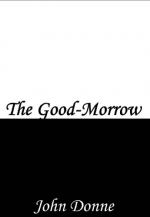
|
| Name: _________________________ | Period: ___________________ |
This quiz consists of 5 multiple choice and 5 short answer questions through Section 1: "The Good Morrow," lines 1-21.
Multiple Choice Questions
1. What kind of fear is the speaker referring to in line 9?
(a) Fear of loneliness and despair.
(b) Fear of the beloved's disapproval.
(c) An existential fear of purposelessness and loss of meaning.
(d) Jealousy and insecurity about the relationship.
2. Which term best describes the rhyming in lines 13 and 14, "Let maps to other, worlds on worlds have shown,/ Let us possess one world, each hath one, and is one"?
(a) Slant rhyme.
(b) Identical rhyme.
(c) Eye rhyme.
(d) True rhyme.
3. Which techniques are seen in line 15, "My face in thine eye, thine in mine appears"?
(a) Sibilance and euphony.
(b) Alliteration and antithesis.
(c) Assonance and internal rhyme.
(d) Consonance and inversion.
4. Which term describes this poem most accurately?
(a) Dialogue.
(b) Apostrophe.
(c) Aside.
(d) Epistle.
5. Who is the author of "The Good Morrow"?
(a) Henry Vaughan.
(b) Andrew Marvell.
(c) George Herbert.
(d) John Donne.
Short Answer Questions
1. Lines 12-14, "Let sea-discoverers to new worlds have gone,/ Let maps to other, worlds on worlds have shown,/ Let us possess one world, each hath one, and is one," contain an example of which technique?
2. In line 14, "Let us possess one world, each hath one, and is one," what two things are being compared?
3. What does the phrase "'Twas so" in line 5 mean?
4. Which word in lines 15-18 is meant to contrast the impermanent nature of life outside the lovers' relationship with the eternal nature of their love?
5. What is the rhyme scheme within each stanza?
|
This section contains 304 words (approx. 2 pages at 300 words per page) |

|




